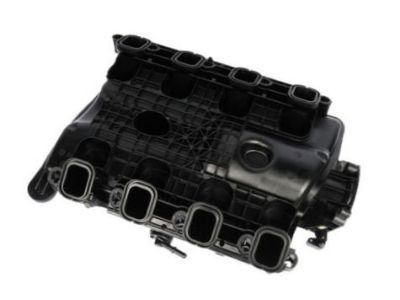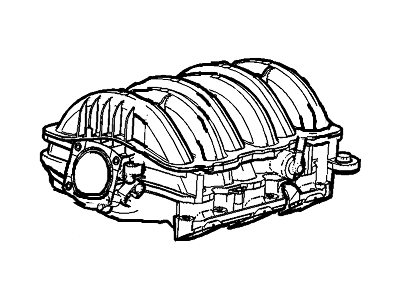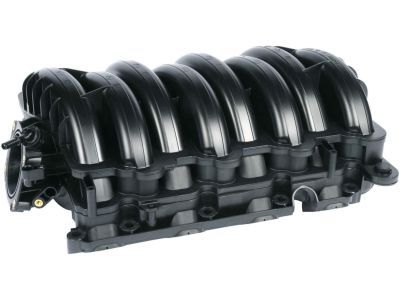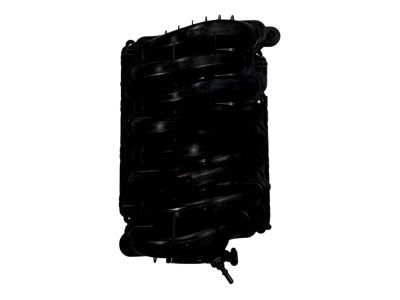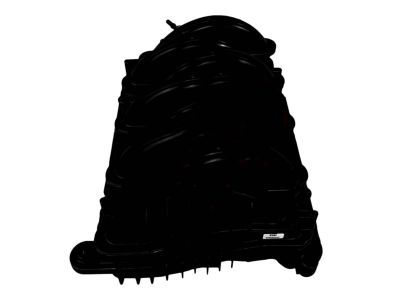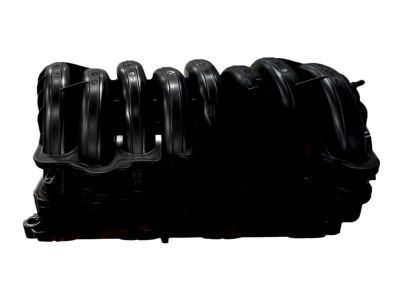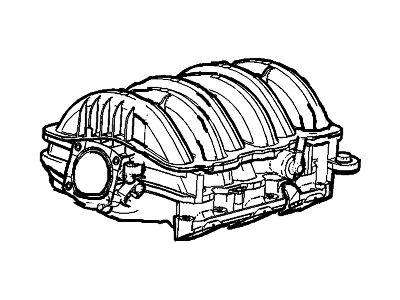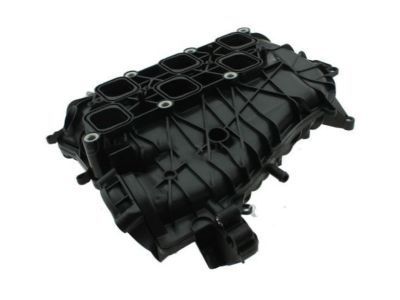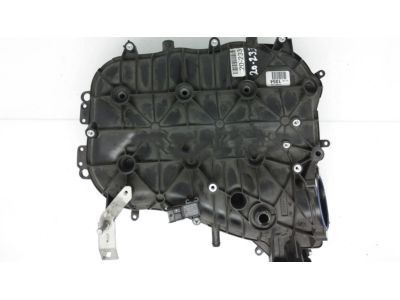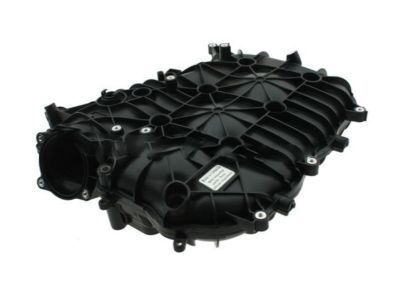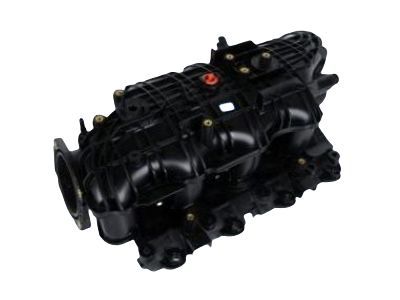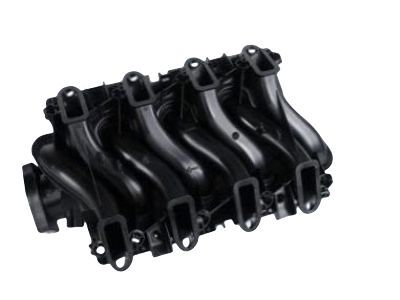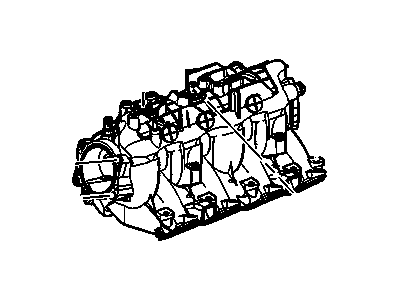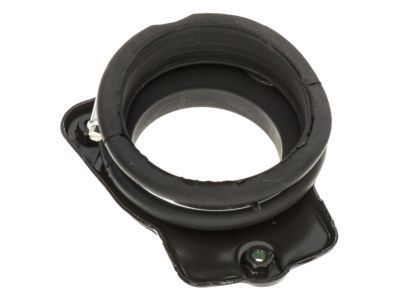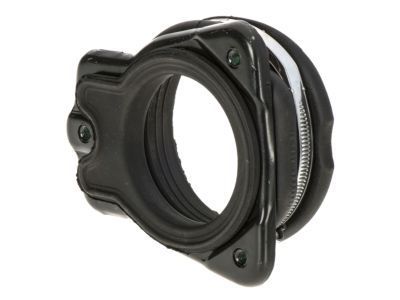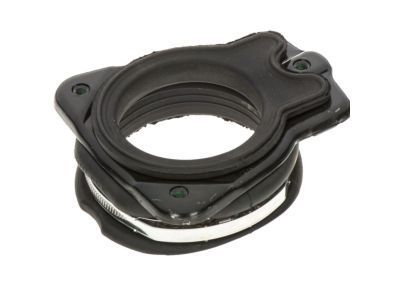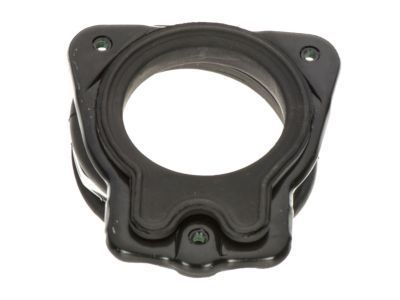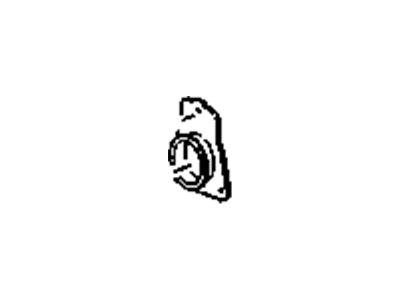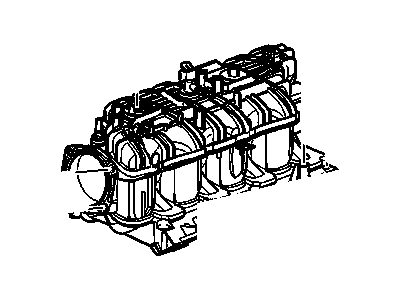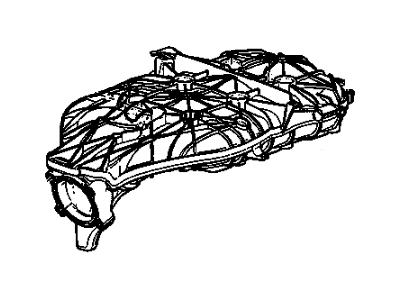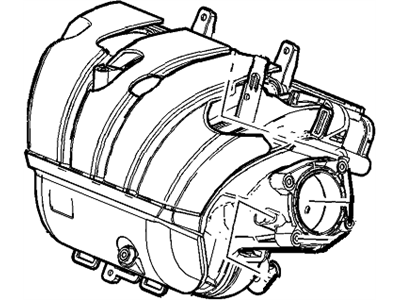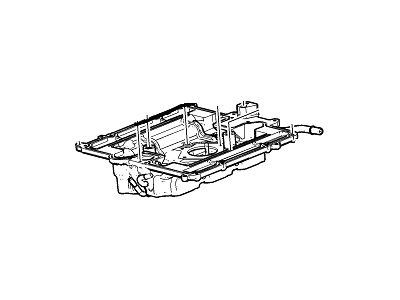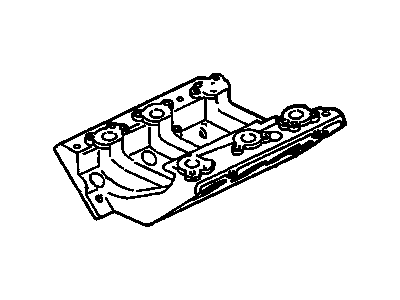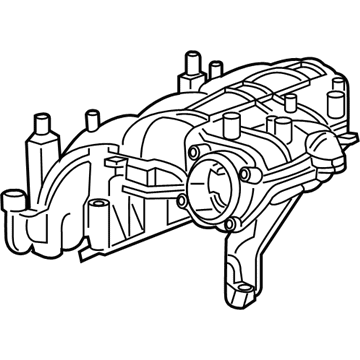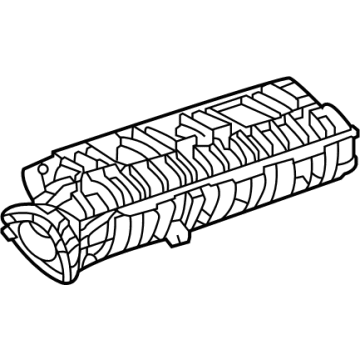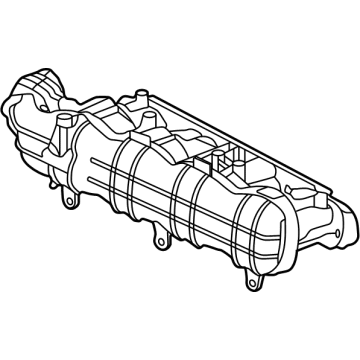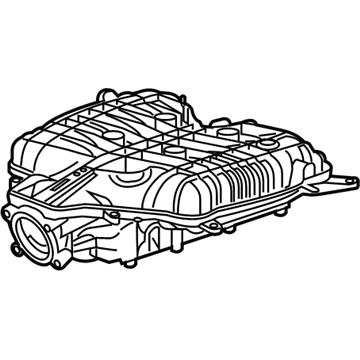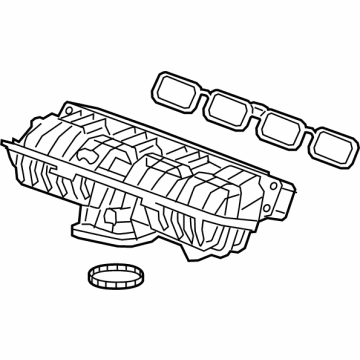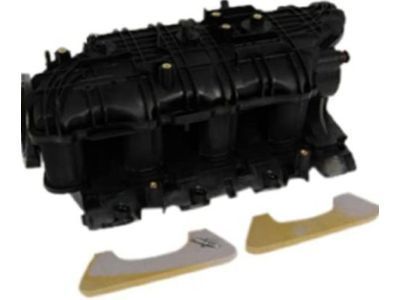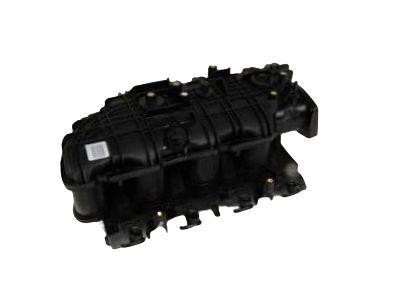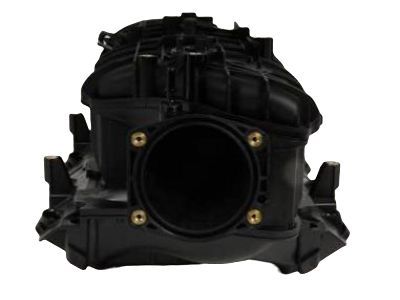
My Garage
My Account
Cart
Genuine Cadillac Intake Manifold
Engine Intake Manifold- Select Vehicle by Model
- Select Vehicle by VIN
Select Vehicle by Model
orMake
Model
Year
Select Vehicle by VIN
For the most accurate results, select vehicle by your VIN (Vehicle Identification Number).
68 Intake Manifolds found
Cadillac Manifold, Intake
Part Number: 12623417$248.33 MSRP: $420.93You Save: $172.60 (41%)Ships in 1-2 Business DaysProduct Specifications- Other Name: MANIFOLD, Engine Fuel Intake Manifold; Intake Manifold, Manifold
Cadillac Manifold, Intake
Part Number: 12639087$153.14 MSRP: $261.86You Save: $108.72 (42%)Ships in 1-2 Business DaysProduct Specifications- Other Name: MANIFOLD, Engine Fuel Intake Manifold; Intake Manifold, Manifold
Cadillac Manifold Assembly, Upr Int
Part Number: 12699182$332.48 MSRP: $573.52You Save: $241.04 (43%)Ships in 1-2 Business DaysProduct Specifications- Other Name: Intake Manifold, Intake Plenum, Manifold
- Replaces: 12648915, 12635243
Cadillac Manifold, Intake
Part Number: 12620308$215.43 MSRP: $351.12You Save: $135.69 (39%)Ships in 1-2 Business DaysProduct Specifications- Other Name: MANIFOLD, Engine Fuel Intake Manifold; Intake Manifold, Manifold
- Replaces: 12597598
Cadillac Plenum, Intake Manifold
Part Number: 12555840$33.49 MSRP: $55.42You Save: $21.93 (40%)Ships in 1-2 Business DaysProduct Specifications- Other Name: PLENUM, Engine Fuel Intake Manifold; Intake Plenum
Cadillac Manifold, Intake
Part Number: 12597600$160.41 MSRP: $388.46You Save: $228.05 (59%)Ships in 1-2 Business DaysProduct Specifications- Other Name: MANIFOLD, Engine Fuel Intake Manifold; Intake Manifold, Manifold
Cadillac Manifold, Intake
Part Number: 12638038$223.46 MSRP: $382.10You Save: $158.64 (42%)Ships in 1-2 Business DaysProduct Specifications- Other Name: MANIFOLD, Engine Fuel Intake Manifold; Intake Manifold, Manifold
Cadillac Manifold Assembly, Upper Intake
Part Number: 12642700$324.46 MSRP: $559.58You Save: $235.12 (43%)Product Specifications- Other Name: MANIFOLD, Engine Fuel Intake Manifold; Intake Manifold, Intake Plenum
- Position: Upper
- Replaces: 12635448
- Product Specifications
- Other Name: MANIFOLD, Engine Fuel Intake Manifold; Intake Manifold
Cadillac Manifold, Intake
Part Number: 12659015$214.28 MSRP: $518.89You Save: $304.61 (59%)Ships in 1-2 Business DaysProduct Specifications- Other Name: MANIFOLD, Engine Fuel Intake Manifold; Intake Manifold
- Replaces: 12647953
Cadillac Manifold Kit,Intake
Part Number: 19330172$608.79 MSRP: $1031.91You Save: $423.12 (41%)Ships in 1-2 Business DaysProduct Specifications- Other Name: MANIFOLD, Engine Fuel Intake Manifold; Intake Manifold, Manifold
- Replaces: 19303933, 12588847, 12564771
Cadillac Manifold, Intake
Part Number: 12674037$98.41 MSRP: $162.88You Save: $64.47 (40%)Ships in 1-2 Business DaysProduct Specifications- Other Name: MANIFOLD, Engine Fuel Intake Manifold; Intake Manifold
- Product Specifications
- Other Name: Intake Manifold
Cadillac Manifold, Intake
Part Number: 12662540$160.82 MSRP: $266.11You Save: $105.29 (40%)Ships in 1-2 Business DaysProduct Specifications- Other Name: MANIFOLD, Engine Fuel Intake Manifold; Intake Manifold
Cadillac Manifold Assembly, Int
Part Number: 12698870$47.30 MSRP: $74.41You Save: $27.11 (37%)Ships in 1-3 Business DaysProduct Specifications- Other Name: Intake Manifold
- Replaces: 12694867
Cadillac Manifold, Intake
Part Number: 12674143$156.06 MSRP: $258.22You Save: $102.16 (40%)Ships in 1-2 Business DaysProduct Specifications- Other Name: Intake Manifold
- Replaces: 12645755
Cadillac Manifold, Lower Intake (Machine)
Part Number: 12611155$346.86 MSRP: $574.12You Save: $227.26 (40%)Ships in 1-2 Business DaysProduct Specifications- Other Name: MANIFOLD, Engine Fuel Intake Manifold; Intake Manifold
- Position: Lower
Cadillac Manifold Assembly, Int
Part Number: 12701996$3361.18 MSRP: $5359.55You Save: $1998.37 (38%)Ships in 1-3 Business DaysProduct Specifications- Other Name: Intake Manifold, Supercharger
- Replaces: 12677538, 12666990, 12686470
Cadillac Manifold Assembly, Int
Part Number: 55515837$77.45 MSRP: $123.50You Save: $46.05 (38%)Ships in 1-3 Business DaysProduct Specifications- Other Name: Intake Manifold
- Replaces: 55506044, 55506043
- Product Specifications
- Other Name: MANIFOLD, Engine Fuel Intake Manifold; Intake Manifold, Manifold
| Page 1 of 4 |Next >
1-20 of 68 Results
Cadillac Intake Manifold
For superior quality and affordable Cadillac Intake Manifolds, consider our website. We proudly present a wide selection of genuine Cadillac Intake Manifolds at unbeatable prices. These OEM parts, supported by the manufacturer's warranty, are also eligible for our hassle-free return policy and swift delivery service.
Cadillac Intake Manifold Parts Questions & Experts Answers
- Q: How to remove and install the intake manifold in 2.8L,3.0L,3.6L V6 engine on Cadillac CTS?A:Before the intake manifold can be removed, one has to release the fuel system pressure and join the negative terminal of the battery. Pull down the suspension crossbrace off from the top of the front struts and the covers of the engine. For the 2005 through 2011 models with 2.6L and 3.6L engines first remove the wiring from the MAF sensor as well as the air intake duct, next disconnect the throttle control motor wiring connector as well as the PCV pipe. At the rear of the engine remove the wiring connection from the barometric pressure sensor, fuel injector harness, EVAP purge solenoid and the variable intake manifold control valve motor bolts; manifold brace bolts, the plenum bolts. Remove the plenum from the intake manifold disengaging all the remaining connections and detach the fuel line connected to the rear end of the fuel rail. Take out intake manifold bolts connect to the cylinder heads and lift of the intake manifold from the engine. On 3.0L engines remove brake booster vacuum hose, the PCV valve, the EVAP hose and all electrical connections to the intake manifold before removing the assembly. In 2012 and later models, remove the PCV tube and EVAP hose, the fuel rail shield, and any electrical connectors that you can see before popping up the intake manifold and its gasket. When tightening let the mating faces be clean, when replacing gaskets, eliminate the old gasket material gently and replace with fresh gaskets in the right manner. Then place the manifold in correct position, add the thread locking compound to the bolt and then tighten the bolts in correct pattern and to the torque value. Last but not the least; check the coolant level, engage the engine and look for the vacuum leaks at the joints of the intake manifold.
- Q: How to remove and install the intake manifold in V6 engine on Cadillac Escalade?A:Before the removal of the intake manifold it is required that you pull the cable off the negative terminal of the battery and also lose the fuel system pressure. Subsequently, exclude the air filter housing outlet duct and label, then, disconnect all engine wiring harnesses which affect the intake manifold extraction, by releasing all the harness clip lock, and bundle all strands away from the operation area. Remove the hose connected to the canister purge solenoid if it is already connected, the fuel line connected to the fuel rail and the PCV hose connected to the intake manifold. Then, remove all other electrical connectors or vacuum hoses which are connected to the intake manifold or throttle body. Ease the intake manifold mounting bolts by a quarter turn, and depending on the engine model, they should be easily removable, be very careful not to use any tools to pry between the manifold and the heads as this may cause damage the gasket sealing surfaces. By pulling it over the heads, then unbending any still connected as the intake manifold is lifted off the engine. For Valve Lifter Oil Manifold (VLOM) removal, other components that must be detached include the fuel pump insulator, the fuel rail and injectors, and the balance shaft sprocket; the VLOM assembly mounting bolts are then removed and the gasket, in case it is still serviceable, should be saved. On mating, the places where the cylinder heads, block and the manifold sit should be absolutely clean: rid of all gasket debris by gentle scraping off at most. Wipe the ribs of the new gasket and place it over the cylinder block, if the VLOM has been removed, replace it and fasten the bolts to the recommended torque. Place the new gaskets in the appropriate position on the intake manifold so that they fit into place and cover the intake port holes; then, with equal care, position and fit the manifold in the space provided. Screw in the bolts and fasten them according to the sequence and torque value but with great care to avoid tightness that will lead to gasket leakage. Last of it, the rest of the installation if done in the reverse manner to removal and once the engine has been started, look out for vacuum leaks at the joints of the intake manifold.
Related Cadillac Parts
Browse by Model
ATS Intake Manifold Allante Intake Manifold Brougham Intake Manifold CT4 Intake Manifold CT5 Intake Manifold CT6 Intake Manifold CTS Intake Manifold Catera Intake Manifold Cimarron Intake Manifold DTS Intake Manifold Deville Intake Manifold ELR Intake Manifold Eldorado Intake Manifold Escalade Intake Manifold Fleetwood Intake Manifold SRX Intake Manifold STS Intake Manifold Seville Intake Manifold XLR Intake Manifold XT4 Intake Manifold XT5 Intake Manifold XT6 Intake Manifold XTS Intake Manifold

